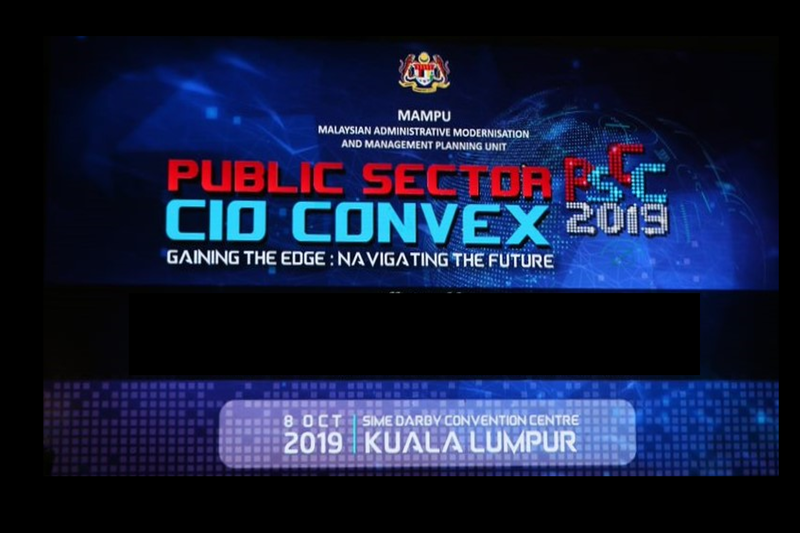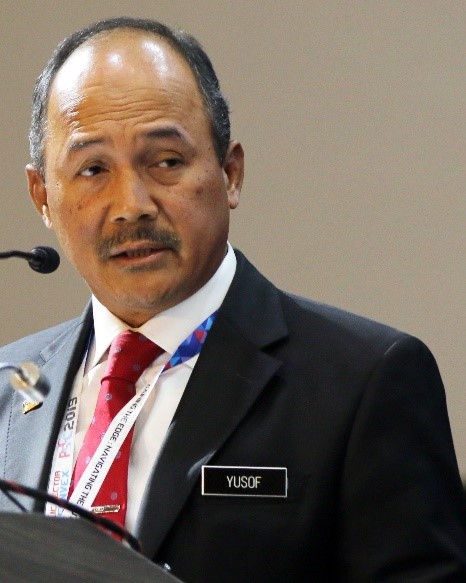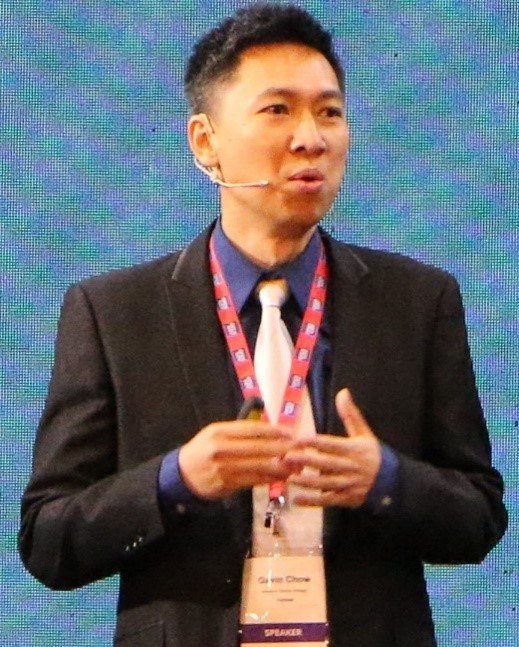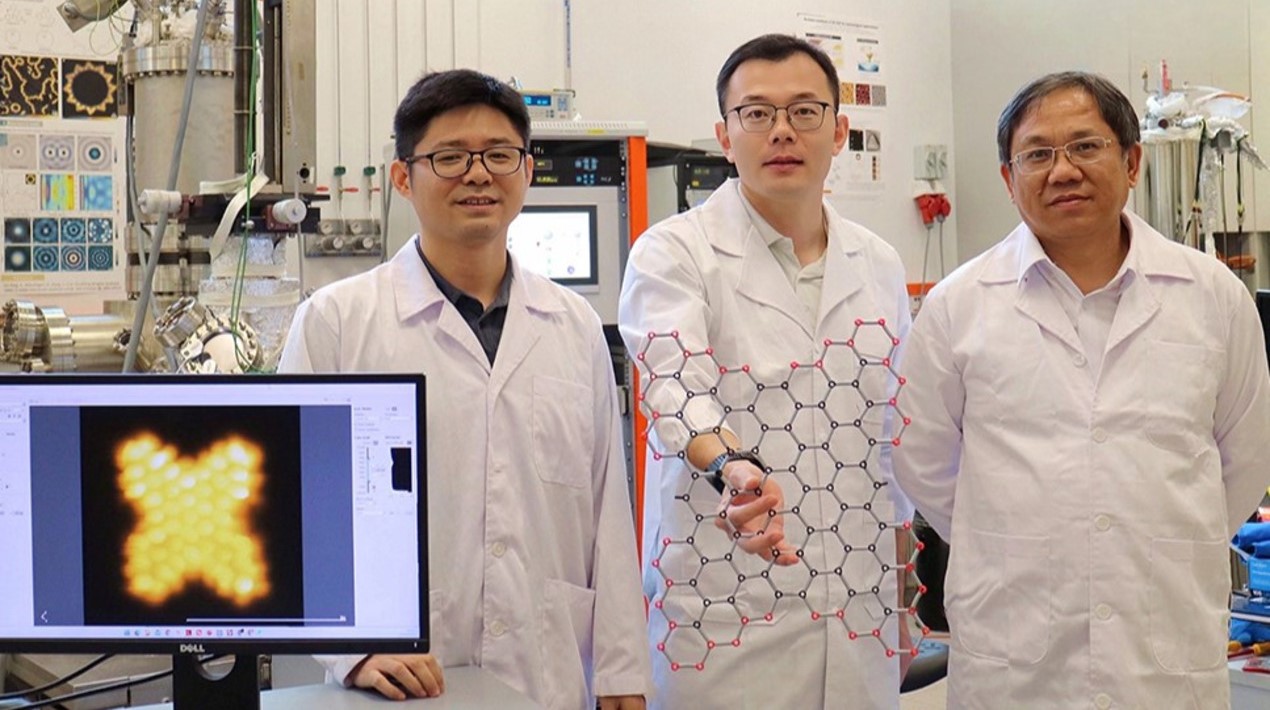
The Public Sector CIO Convex 2019 – Gaining the edge: Navigating the future was held from 8-9 October at the Sime Darby Convention Centre, Kuala Lumpur.
The event saw the Malaysian Administrative Modernisation and Planning Unit (MAMPU) and OpenGov collaborating for the fourth time on a two-day event which featured a series of case study presentations and panel discussions on several areas of technology.
Welcoming remarks: Gaining the competitive edge

Dato’ Dr. Yusof Bin Ismail, Deputy Director General (Transformation and Management Modernisation) at MAMPU gave the welcoming remarks for the event.
He stressed that it is right and timely to address digital transformation. It is key to have knowledge and embrace emerging technology.
Quoting International Data Corporation, a premier global market intelligence firm, Dr. Yusof said they predicted that by 2022, over 25% of endpoint devices and systems will execute AI algorithms.
AI-enabled user interfaces and process automation will replace one-third of today’s screen-based apps in Malaysia by 2024.
Dr. Yusof posed the question: Are we ready to navigate through this? He pointed out that digital transformation is already happening and creating technology disruption in Malaysia.
Internet Users Survey 2018 conducted by the Malaysia Communications and Multimedia Commission (MCMC) found that Malaysian citizens are ready for fully digitalised public services.
He said that if people are ready to embrace the digitalised public service, then it is crucial for the government to gain their competitive edge in driving value impact services to the citizens.
Sharing his hopes for the future he said that Chief Information Officers (CIOs) should take away valuable knowledge from the session, make connections and return to their organisations enlightened.
“Let’s get to the right trajectory towards achieving our goals.”
Dato’ Dr. Yusof Bin Ismail
Technology case study 1- Digital explosion: Are you secure?

Gavin Chow, Network and Security Strategist, Fortinet, Malaysia shared about the importance of cybersecurity and of risk management.
He said that with 5G increasing interconnectivity and getting communities close together, security becomes a key aspect for ensuring that these connections are safe. He said that security should be built-in at the foundation level and not bolted on.
Gavin said that while the common understanding is that risks exist over the internet, attackers can infiltrate from within internal organisational networks as well.
Looking again at 5G networks from a government perspective and of their widespread connectivity, the risk lies in the possibility of attacks spreading across all industries. Gavin enforced that cyber defence measures should be taken across all industries.
He listed the profiles of attackers, according to their level of motivation.
Recreational hackers have the least motivations, followed by a criminal, hacktivist, organised and nation hackers with the highest.
Concluding his segment, he shared some key recommendations for ensuring security:
- Cyber hygiene
- Evolving threat landscape
- Policy management
- Operational oversight
- Broad, integrated, automated approach
Panel Discussion 1- Fit for the Future: Government investment in digital talent
 Klaus Felsche, Senior Advisor, OpenGov Asia, Australia moderated the panel discussion. The panellists for this discussion were Brett Aimers, Adjunct Associate Professor College of Public Health Medical and Veterinary Science, James Cook University, Australia, Ts. Azlina Binti Azman, Senior Deputy Director, Public Service Department Malaysia, and Dr. Sumitra Nair, Vice-President Talent Development and Digital Entrepreneurship, Malaysia Digital Economy Corporation (MDEC).
Klaus Felsche, Senior Advisor, OpenGov Asia, Australia moderated the panel discussion. The panellists for this discussion were Brett Aimers, Adjunct Associate Professor College of Public Health Medical and Veterinary Science, James Cook University, Australia, Ts. Azlina Binti Azman, Senior Deputy Director, Public Service Department Malaysia, and Dr. Sumitra Nair, Vice-President Talent Development and Digital Entrepreneurship, Malaysia Digital Economy Corporation (MDEC).
People are for important change to happen
Klaus posed panellists with the question: With the availability of technology, what is still missing?
Sumitra said, “There are only three words to this: People, people and people”.
Brett said that governments need to practice intelligent allocation of money for digitalising efforts. He said that it can be best done through understanding the expectations of the community – such as availability of applications for online processing and removing paper-based documentation.
Azlina said that optimising plans is key. She said that people will stay consistently the same while technology and processes will change, with millennials changing the game. Change should not just occur in the technology domain; it must cut across everyone from businesses to decision-makers.
Data-driven mindset
Klaus next brought the session into the topics of technical skills and data literacy.
Sumitra said that data literacy is not limited to the technology department. With data being everywhere, she said that it is important to know how to equip ourselves to be data literate.
She shared that MDEC’s goal is to produce 20,000 data professionals by 2020. They are at 11,000 now. She stressed that having a data-driven mindset change and internalisation is important. Organisations must be responsible and ensure that data literacy is being cultivated within. “Mindset. Continuous. Responsibility”, she said.
Managing fake news
Brett said that the government should capitalise on innovations for mainstreaming and educating and creating awareness of phishing and risks.
Government-follower or leader?
Azlina said that being a follower could be damaging to the government in the long run. She said that the government should be more participative than leading. Co-designing and redesigning existing solutions to suit the government is important.
Sumitra concluded the discussion with the three most important pointers for ensuring that the government is at the top of innovation:
- Right people to serve
- People to deliver solutions
- People to have the right mindset and culture of life-long learning
















